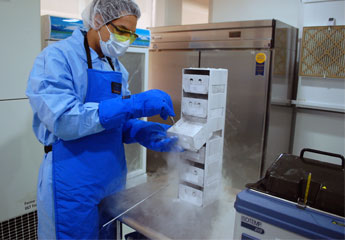
Stem cell preservation’ is a well-known term today. A lot of to-be-parents are enquiring about stem cell preservation and opting for it.
Stem cells are body’s master cell that can regenerate to form any organ of body. With growing research they have been used to cure several diseases like cancers, immune deficiencies, blood disorders and or genetic disorder. Around 80% of childhood and adult diseases can be treated with the help of stem cells. Since, doctors use body’s own cell in treating diseases, the chances of rejection is minimal. There are mainly three types of stem cells – embryonic, adult and induced pluripotent. Stem cells can be extracted from bone marrow which is generally used for autologous transplantation, cord blood cells which are collected during birth and preserved for future use and adipose tissue which are rich source of stem cells.
Cord blood or umbilical cord blood is a blood remaining in baby’s umbilical cord and placenta after birth. This part is generally discarded post delivery. However, this blood is quite rich in stem cells and can hold promising use if needed in future. Extracting this cord blood is an easy technique and does not cause any damage to the baby or mother. The rate of engraftment of such cells is high and it can possibly be used for siblings as wells. Several stem cell banks are available across the globe which helps you to preserve these cells at a nominal cost. The cost comprises of one time collection and processing fees and an annual storage fee. These cells can be made available anytime when needed. This stem cell can also be used for public donations.
Stem cells surely hold a bright future. But there are few downsides as well. Privately banked cord blood cells have a big limitation in case of health insurance policies and at times the use of these cells as a medical treatment may not be considered as a right one. If a child develops certain genetic disorder the chances are the cells collected will also have the same flaw. Genetic match with siblings is only 25 % and patriarchal match around 50%. So the chances of rejection in case of siblings or parents are still quite high. Cost of preservation and usage is very high and stem cell therapy may be relatively costly compared to other available treatments.
Even with the above mentioned drawbacks stem cell still appears to be important investment. It is probably the best gift we can give to our child which can be cherished for lifetime.
